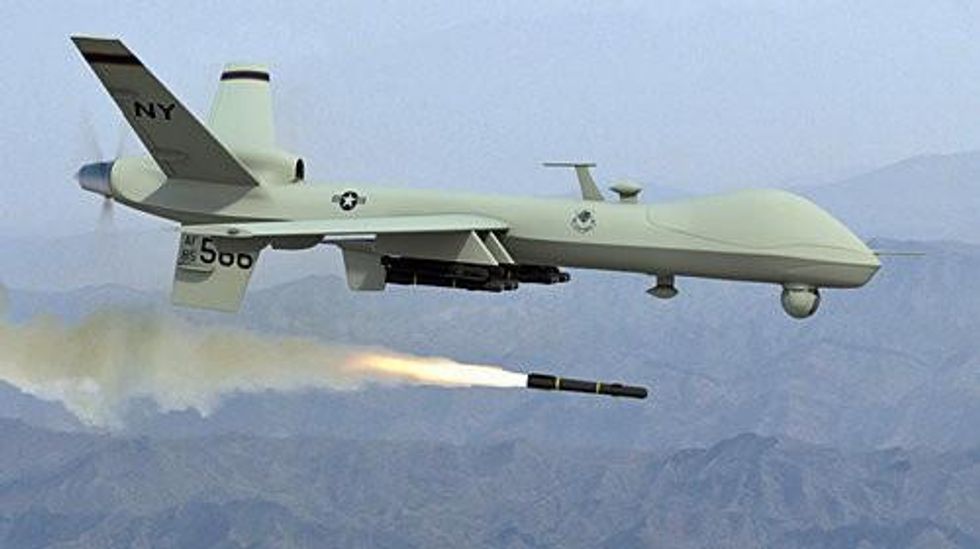In Yemen, Pakistan and elsewhere the C.I.A. has used drones to kill thousands of people -- including several Americans. Officials have aggressively defended the controversial program, telling journalists that it is effective, lawful and closely supervised.
But in court, the Central Intelligence Agency refuses even to acknowledge that the targeted killing program exists. The agency's argument is based on a 35-year-old judicial doctrine called Glomar, which allows government agencies to respond to requests under the Freedom of Information Act, or FOIA, by refusing to confirm or deny the existence of the records that have been requested.
The doctrine sometimes serves a legitimate purpose, but the C.I.A. has grossly abused it, in cases relating to the targeted killing program and other counterterrorism operations. It is invoking the doctrine not to protect legitimately classified information from disclosure, but to shield controversial decisions from public scrutiny and to spare officials from having to defend their policies in court.
The doctrine owes its name to a ship called the Hughes Glomar Explorer, which the C.I.A. used in the early 1970s to salvage a sunken Soviet submarine. When The Los Angeles Times exposed the effort in 1975, the agency tried to suppress coverage, asking news organizations not to publish follow-up stories. Harriet A. Phillippi, a journalist for Rolling Stone, filed a FOIA request to learn more about the C.I.A.'s effort. The C.I.A. refused to confirm or deny the existence of the records Ms. Phillippi had requested.
The C.I.A.'s response was unusual. Ordinarily, an agency served with a FOIA request is required to produce a list of relevant records. The agency must then release the listed records or cite specific legal justifications for keeping them secret. In the Glomar case, the C.I.A. argued that there were circumstances in which it was impossible for an agency to acknowledge even the existence of relevant records without also revealing some fact that the government had a right to withhold.
There are indeed cases in which merely confirming or denying the existence of certain records would reveal a classified fact, such as whether a particular person is a covert intelligence agent or the current target of lawful surveillance.
Those cases, however, are far less common than the C.I.A.'s increasingly frequent reliance on the Glomar doctrine would suggest. A study by the National Security Archive shows that federal court opinions cited the doctrine three times as often in the decade after 9/11 as in the quarter-century preceding it.
There has been a qualitative shift, too. Most of the cases before 2001, including the 1976 Glomar case, involved relatively narrow intelligence-gathering programs that were plainly within the C.I.A.'s mandate. More recently, the agency has used the Glomar doctrine to shield exceptionally controversial programs, and even unlawful conduct, including the torture and rendition of terrorism suspects.
The doctrine has also been invoked since 9/11 to shape public debate. A slew of administration officials have already spoken about the targeted killing program to reporters, both anonymously and on the record, and President Obama himself answered questions about the program during an online town hall. Thus the Glomar doctrine is not serving to keep the targeted killing program a secret, but rather to control which facts about the program are made public, and when. Not coincidentally, the C.I.A.'s reliance on the Glomar doctrine also makes it more difficult for individuals injured by the agency's counterterrorism policies to challenge those policies in court.
Without pressure from outside, the C.I.A. is unlikely to end its manipulation of the classification system. But the Justice Department, which represents the C.I.A. in court, could decline to defend questionable invocations of the doctrine. President Obama, who at some important junctures has been receptive to arguments for transparency, could direct the C.I.A. to answer FOIA requests that it would prefer to evade.
In one of the American Civil Liberties Union's cases relating to the targeted killing program (a case in which The New York Times is also involved), the government recently told the court that officials "at the highest level" are re-evaluating the government's stance on the secrecy of the targeted killing program. This is a noncommittal statement, but perhaps a promising one. The administration should direct the C.I.A. to abandon its pretense that the very existence of the targeted killing program is a secret. It should also direct the C.I.A. to release the legal memos that authorized the program and the evidence it relied on to carry out the drone strikes that killed three Americans in Yemen last year.
If the administration fails to change course, the courts should intervene. The Glomar case itself supplies a useful map. While the appeals court in that case accepted the legitimacy of the Glomar doctrine, it found that the C.I.A. had not sufficiently justified its reliance on it. It ruled that Ms. Phillippi, the reporter, could submit written questions to the agency and depose agency personnel in order to "clarify the Agency's position or to identify the procedures by which that position was established." Faced with the prospect of actually having to defend its Glomar invocation, the C.I.A. opted for limited disclosure instead.
The C.I.A.'s manifest abuse of the Glomar doctrine undermines public confidence in the classification system, distorts public debate about issues of extraordinary importance, and enables an agency with sweeping authority -- including the authority to kill -- to operate with insufficient public oversight. The president, the attorney general and the federal courts have the power to end this abuse, and they should.


